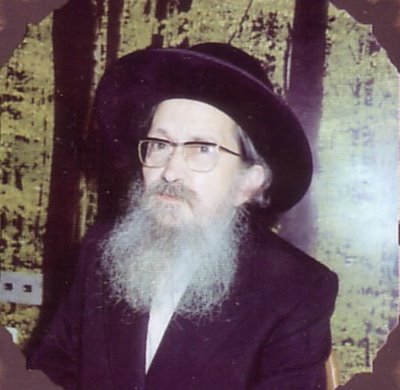Monday, July 31, 2006
Simcha Ma Zeh Oseh – What Does Joy Do?

***
this next part is part of an appreciation I wrote after the Rebbe ZT”L was niftar, six years ago:
In the early 1980's, a Rav whom I was close to showed a group of us a new sefer that had just been published. It was called Nesivos Shalom, by the Slonimer Rebbe. The Rav himself is quite a talented teacher and has a large following himself, but he told us how he was in awe of this sefer - that it spoke to him in the deepest way. He was kind enough to begin learning it with a group, every Shabbat morning before the Shacharit Tefilla. We were quite impressed at the Rebbe's eloquent style, and the depth of the matters that he touched on. We eagerly attended these shiurim, and reviewed the lessons on our own as well. As we progressed through the sefer, we were amazed to know that its author was a contemporary of ours, who lived in Yerushalayim, where he led a small group of Chassidim and a number of educational institutions. We thirstily longed for more - and when the next volume came out, about Shabbat and Moadim, the various festivals on the Jewish calendar, we quickly bought it and eagerly learned its contents. [Quite a few years later, more volumes came out - on the entire Chumash - portions of the Torah].
***
The Slonimer Rebbe on Joy, Song and Dance – a brief selection
The general principle is this: Our holy Torah is divided up into awe, love, and joy. Each of these can bring you closer to G-d. Your submission to G-d on fast-days is not dearer to Him than your joy on Shabbat and festivals…You should rejoice in the mitzva because of your love of it. You should realize the good he has bestowed on you. It is as if you were invited to the King’s table and to partake of His bounty. You will then be grateful both inwardly and outwardly. If your joy moves you to sing and dance—this is an act of divine service and one of holding close to G-d.
***
Even when a person is unable to attain the kind of joy we have described he should know that even simple joy—a joy that comes from positive thoughts—is considered acceptable and important. It is related that once on Rosh Hashana, the Baal Shem Tov would not join the congregation for the sounding of the shofar, for he was attempting to annul a severe decree and unable to do so. His disciples sat trembling with dread and anxiety. An ignorant bumpkin saw all the worry on the faces of the disciples. He went and dressed himself up as an animal in order to cheer the people up. When the people relaxed and laughed, the Baal Shem Tov emerged. He said that the only way to avert the decree was through joy but that all his worry and the anxiety of his disciples had prevented them from experiencing joy. When the bumpkin made the people laugh the decree was annulled. What does joy do? (Ecclesiastes 2). Even a superficial kind of joy can have a positive effect.
The holy Rabbi of Tchortkov once instructed a disciple of his who was greatly distressed over an impending trial that could lead to the disciple’s execution. It was after the festival and the Chassidim were dancing in great joy. The rabbi instructed the disciple to join the dancers and that salvation would result.
He related that once the holy Baal Shem Tov was informed on Yom Kippur that if the community would be unable to recite the blessing on seeing the moon following the holy day it would be an omen of severe decrees for the coming year. The holy day ended, the sky was filled with clouds and it poured with rain. There was no chance of seeing the moon, and all the Baal Shem Tov’s devotions were of no avail. His holy disciples knew nothing of this, and danced with great fervor as they always did following Yom Kippur. The joy exceeded all bounds; it spread throughout the town and the dancers—in their tremendous joy—asked the Baal Shem Tov to join them. When he agreed and began to dance with them the announcement came that the moon could now be seen!
The Chassidim say that there are two kinds of dance: There is a dance that originates in the mind and heart and spreads to the legs and body. There is another kind of dance where a person is unable to elevate his mind and heart; he simply lifts up his legs in dance and this arousal affects his mind and heart to the extent where all his bones exclaim, Hashem! Who is like You? Intent in prayer can be aroused through singing. How much more so when singing is accompanied by dance! These two together have the power to arouse a Jew from his spiritual slumber—to awaken the sleeping and arouse the slumbering—and to attain a state of inner joy.
Zechuso yagein Aleinu v'al Kol Yisrael!
www.herutx.blogspot.com
Congratulations for your blog.
<< Home

